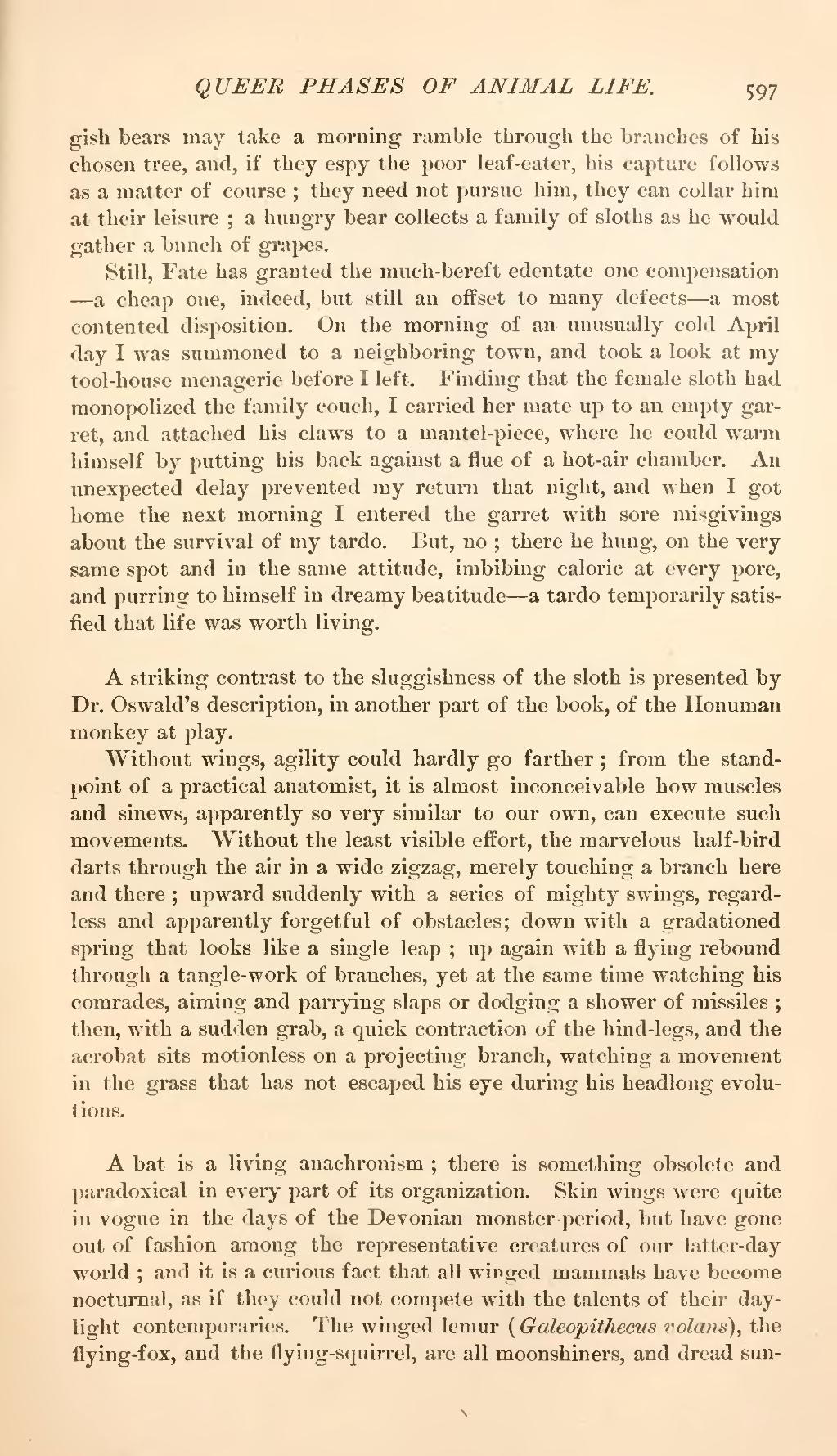gish bears may take a morning ramble through the branches of his chosen tree, and, if they espy the poor leaf-eater, his capture follows as a matter of course; they need not pursue him, they can collar him at their leisure; a hungry bear collects a family of sloths as he would gather a bunch of grapes.
Still, Fate has granted the much-bereft edentate one compensation—a cheap one, indeed, but still an offset to many defects—a most contented disposition. On the morning of an unusually cold April day I was summoned to a neighboring town, and took a look at my tool-house menagerie before I left. Finding that the female sloth had monopolized the family couch, I carried her mate up to an empty garret, and attached his claws to a mantel-piece, where he could warm himself by putting his back against a flue of a hot-air chamber. An unexpected delay prevented my return that night, and when I got home the next morning I entered the garret with sore misgivings about the survival of my tardo. But, no; there he hung, on the very same spot and in the same attitude, imbibing caloric at every pore, and purring to himself in dreamy beatitude—a tardo temporarily satisfied that life was worth living.
A striking contrast to the sluggishness of the sloth is presented by Dr. Oswald's description, in another part of the book, of the Honuman monkey at play.
Without wings, agility could hardly go farther; from the stand-point of a practical anatomist, it is almost inconceivable how muscles and sinews, apparently so very similar to our own, can execute such movements. Without the least visible effort, the marvelous half-bird darts through the air in a wide zigzag, merely touching a branch here and there; upward suddenly with a series of mighty swings, regardless and apparently forgetful of obstacles; down with a gradationed spring that looks like a single leap; up again with a flying rebound through a tangle-work of branches, yet at the same time watching his comrades, aiming and parrying slaps or dodging a shower of missiles; then, with a sudden grab, a quick contraction of the hind-legs, and the acrobat sits motionless on a projecting branch, watching a movement in the grass that has not escaped his eye during his headlong evolutions.
A bat is a living anachronism; there is something obsolete and paradoxical in every part of its organization. Skin wings were quite in vogue in the days of the Devonian monster-period, but have gone out of fashion among the representative creatures of our latter-day world; and it is a curious fact that all winged mammals have become nocturnal, as if they could not compete with the talents of their daylight contemporaries. The winged lemur (Galeopithecus volans), the flying-fox, and the flying-squirrel, are all moonshiners, and dread sun-
